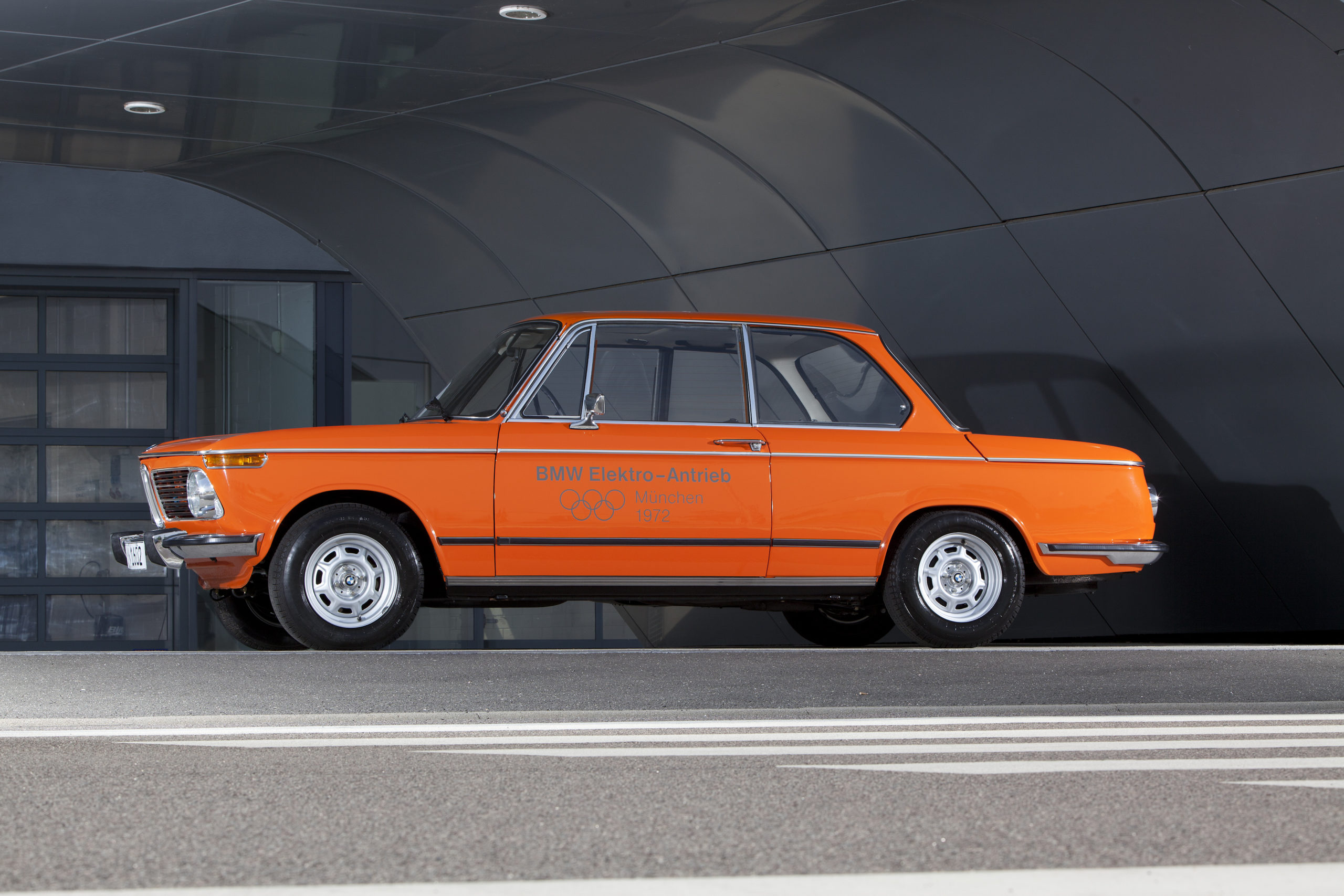This year, BMW is making a huge deal about the 50th anniversary of its M brand. While the motorsports arm of the brand is certainly due for a celebration, the automaker should also be celebrating the 50th birthday of its first electric vehicle, not to mention its other milestones in electrification.
While the automaker offers an impressive number of PHEVs and BEVs, the path to this reality started 50 years ago and hasn’t really slowed down since.
1972 BMW 1602

The first steps toward the German brand’s electrified portfolio started 50 years ago at the Olympic Games in Munich. Designed to act as support vehicles during events like the marathon, these 1602s featured a dozen lead-acid 12-volt batteries placed on a pallet in the engine bay. These batteries powered the rear wheels through a DC shunt-wound motor that peaked at 32 kW or about 43 horsepower. It’s hard to believe given the era but this BMW featured regenerative braking, similar to modern electrified vehicles.
However, this prototype wasn’t quick, with a 0-31 MPH time of eight seconds and a top speed of just 62 MPH. The powertrain was relatively heavy, with the motor weighing 187 lbs., while the battery pallet tipped the scales at 772 lbs.
All it could muster is a mere 19 miles of range in typical use around the city. However, BMW notes that if the 1602 drove at a constant 31 MPH, it could deliver 38 miles of range. The concrete lesson BMW learned from this prototype was that there were limitations in electric motoring that could only be solved through advancements in battery technology.
1987 – 1990 BMW 325iX

The automaker kept its eyes on electrification, experimenting with a DC motor-powered LS in 1975, but saw a breakthrough in the late ‘80s with its 3-series prototypes. That’s when it converted eight 325iX models to use electric power, though they lost their all-wheel-drivetrain in the process.
These front-wheel-drive EVs used a new 22 kWh Sodium-Sulphur Battery that was almost 220 lbs. lighter than the old battery packs used in the 1602.
Though the leap in battery technology was significant, the automaker used a relatively modest 30 hp electric motor that could only propel these prototypes to 31 MPH in 9 seconds.
However, these examples managed a significant 93 miles of range. Adding another note to this piece of BMW history, these EV prototypes marked the first times the automaker conducted external trials under everyday conditions. A touring model proved to be the perfect fit for the German postal service, while other prototypes were used around the city by the state and local authorities.
1992 – 1997 BMW 325

The next step for BMW’s electrification prototypes came a few years later, and with it came a significant improvement in both battery and motor. Twenty-five or so third-generation 3-Series were outfitted with sodium-nickel chloride batteries, while one model used a nickel-cadmium battery. The batteries packed up to 29 kWh, but more importantly, featured a form of quick-charging that could charge 75 percent of the battery in just 40 minutes. The automaker also boasts that these models could recoup much more electrical energy while driving; up to 20 percent in the right situations.
These prototypes are easily identifiable via their striking yellow paint finish and their modern performance figures. Later examples of these experimental 3-Series’ could hit 31 MPH from a standstill in a mere six seconds and could achieve a top speed of 84 MPH. While these sound like incredible improvements, the vehicles could only manage 93 miles of range.
BMW ActiveE and MINI E

In the late 2000s, BMW began to test the feasibility and appetite of the electric vehicle market. It started in 2008 with the MINI E, which featured a 35 kWh Lithium-Ion Battery that was paired with a 204 hp asynchronous motor, allowing for about 155 miles of range and a 0-62 MPH sprint of just 8.5 seconds. Over six hundred MINI Es found temporary homes in the USA and Europe as part of a pilot program. These pioneers received a wall box that could fully recharge the batteries in just two and a half-hours.
Shortly after the MINI E, the BMW ActiveE debuted, previewing the final drivetrain and battery of an upcoming electric city car known only as the Megacity Vehicle or MCV. Based on the 1-Series Coupe, a fleet of over 1,000 ActiveE models hit the road in 2011, boasting a 32 kWh Li-ion battery, a 167 hp electric motor, and 100 miles of range.
The reception to these models inspired the confidence for BMW to start seriously marketing its electric future. The MCV became the i3, marking the beginning of the BMW i sub-brand that still continues today.
BMW has been working on EVs for over 50 years, making its substantial portfolio of electric vehicles more than a mere fad or regulatory requirement. The latest offering from the brand comes in the form of the 2023 BMW iX M60, which combines the five decades of M performance with 50 years of EV knowledge into one speedy, yet environmentally friendly package.

